MDMA pills — Definition & core facts
MDMA pills are pressed tablets frequently sold as “ecstasy” that may contain MDMA (3,4-methylenedioxymethamphetamine) or other substances. MDMA produces stimulant and empathogenic effects (increased energy, sociability, altered time perception), but can also cause dangerous physical and psychiatric effects. Because composition and strength vary widely between batches, visual identification is unreliable.
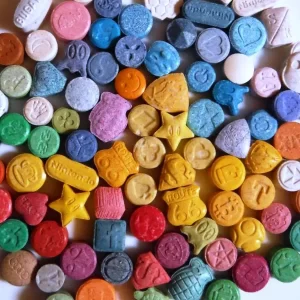
mdma pills
MDMA pills — Pictures, logos and why appearance is unreliable
MDMA pills appear in many colors, shapes and logos (branded tablets are commonly reported in monitoring systems). However, pills with the same logo can come from different manufacturers and contain different substances or doses — logos are not a reliable indicator of safety or purity. Use pictures only for informational/identification purposes, and always pair visual checks with chemical testing when possible.
MDMA pills — Recent alerts & documented high-dose / adulterated tablets (dated)
MDMA pills have been the subject of recent public-health alerts in multiple jurisdictions reporting high-dose tablets and tablets adulterated with other potent substances (including synthetic opioids and novel stimulants). Notable recent alerts:
NSW Health: “Multiple high dose MDMA (ecstasy) tablets circulating in NSW” (issued May 6, 2025).
Victoria Department of Health: “High-dose ecstasy tablets in hot conditions” (March 9, 2025) — includes reports of tablets with unexpectedly large MDMA dosages (example: yellow ‘SpongeBob’ pill).
DEA public factsheets and monitoring note that ecstasy tablets may contain MDMA, other stimulants, or harmful adulterants (MDA, PMA, synthetic cathinones, etc.).
Why this matters: higher-than-expected MDMA doses and adulterants increase the risk of overdose, hyperthermia, cardiac events, and death. Including a dated alerts block signals freshness and builds trust.
MDMA pills — Types, street names & “pure” MDMA myth
MDMA pills (tablets) are commonly called ecstasy or E, while “molly” typically refers to powdered/crystalline MDMA. Claims of “pure MDMA pills” are common in marketplace language but are not guarantees — many seized pills tested by monitoring agencies show a mix of drugs, fillers, or adulterants. Treat “pure” claims skeptically and prioritize testing.
MDMA pills — MDMA pills vs crystal (molly)
MDMA pills are pressed forms meant for oral use; crystal (molly) is a powder/crystalline form. Both forms may contain MDMA or other substances; therefore, testing and cautious dosing are important regardless of the form. Effects can differ by dose, route and co-ingested substances.
MDMA pills — How to test pills (step-by-step, practical)
MDMA pills can be preliminarily screened with reagent kits and field test strips; these tests reduce—but do not eliminate—risks. For safer use, follow these steps:
Seek local, professional drug-checking services where available (festival and community testing gives lab-level results). See local alerts page for service availability.
Use reagent kits correctly (Marquis, Simon’s, Froehde etc.) to identify common reactions; follow manufacturer instructions and compare colors against official charts. Keep samples tiny (pinhead size). Reagent tests show presence/absence signals but are not definitive.
Use fentanyl test strips if there’s a risk of opioid contamination; dilute samples as directed by the strip manufacturer or harm-reduction provider (DanceSafe provides specific dilution instructions). Note limitations—some strips do not detect all analogs.
Record batch details (logo, color, date, location) and check community databases (KnowDrugs) for reported test results on the same pill. Community reports can flag dangerous batches quickly.
If a reagent result is unexpected or indicates dangerous adulterants, do not consume. Only lab testing can provide definitive composition; when in doubt, treat the pill as potentially dangerous.
Limitations: Reagent and strip tests are harm-reduction tools, not guarantees. Lab testing is the only way to confirm exact composition.
MDMA pills — Harm-reduction & safer-use recommendations
MDMA pills: if someone chooses to use despite risks, follow these risk-reduction practices:
Test every pill/packet before use. Use both reagent tests and, where available, professional drug checking.
Start with a small fraction of a pill (e.g., ¼) if the dose is unknown; wait at least 60–90 minutes before considering more (delayed onset happens).
Avoid mixing with alcohol, benzodiazepines, opioids, MAOIs or other stimulants. Interactions can be life-threatening.
Keep cool, hydrate sensibly (sip fluids; don’t overhydrate). Take breaks from dancing and monitor body temperature.
Use with trusted people and have a sober person available. Know how to describe symptoms quickly to emergency responders.
MDMA pills — Health risks, overdose signs & what to do
MDMA pills can cause: hyperthermia, dehydration, seizures, serotonin syndrome (especially with certain medications), high blood pressure, cardiac problems, and psychological effects (anxiety, depression). If someone shows severe symptoms (very high body temperature, seizures, unresponsiveness, difficulty breathing, chest pain), call emergency services immediately and describe the suspected substances used. Prompt medical care saves lives.
MDMA pills — Legal status & penalties (summary)
MDMA pills are controlled/illegal in most jurisdictions and carry criminal penalties for possession, distribution, and manufacture. Legal consequences vary by country and region; include a short local legal notice on your page for readers in different jurisdictions. For public-facing health content, emphasize that medical help will generally be provided irrespective of legal concerns in many jurisdictions.
MDMA pills — Trusted resources & links
MDMA pills — use the following official/harm-reduction resources for testing, alerts and information:
DEA MDMA/ecstasy factsheet (overview).
NIDA — MDMA (Ecstasy/Molly) research & risks.
EMCDDA — European monitoring & drug reports (regional trends).
Health NSW & Health Victoria — recent public drug alerts and drug-checking trials.
DanceSafe — reagent kit instructions, reagent/fentanyl strip guidance, and event drug-checking info.
KnowDrugs — community pill testing database and pill alerts.
MDMA pills — Quick action checklist (for busy readers)
Test before consuming (reagent kits or professional checking).
Start small; wait 60–90 minutes.
Avoid combining with other drugs/alcohol.
If severe symptoms occur, call emergency services immediately.
FAQ — MDMA pills (concise, harm-reduction focused)
1: What are MDMA pills?
A: MDMA pills are pressed tablets that may contain MDMA (3,4-methylenedioxy-methamphetamine) or other substances. Composition and strength vary widely between batches, so visual appearance alone doesn’t guarantee what’s inside.
2: Are MDMA pills the same as “molly”?
A: Not exactly. “Molly” often refers to powdered or crystalline MDMA; “MDMA pills” usually means pressed tablets. Both forms can be adulterated and should be tested before use.
3: Can MDMA pills contain fentanyl or other dangerous adulterants?
A: Yes. Some tablets have been found with synthetic opioids, novel stimulants, or other hazardous compounds. That’s why testing and awareness of public safety alerts are important.
4: How can I test MDMA pills?
A: Use a combination of methods where possible: local lab/onsite drug-checking services (best), reagent kits (Marquis, Simon’s, Froehde) for preliminary screening, and fentanyl strips if opioid contamination is a concern. Reagent tests are helpful but not definitive.
5: Are reagent tests reliable?
A: Reagent tests can detect many common adulterants and flag suspicious pills, but they’re not 100% reliable. Professional lab testing is required for definitive composition.
6: What are common health risks after taking MDMA pills?
A: Risks include overheating (hyperthermia), dehydration, serotonin syndrome (especially with certain medications), elevated heart rate/blood pressure, seizures, and psychological effects (anxiety, low mood). Adulterants increase risk further.
7: How long do effects typically last?
A: Typical effects of MDMA last about 3–6 hours, but this varies by dose, purity, and individual factors. Residual effects (tiredness, low mood) can last several days.
8: What should I do if someone has a severe reaction?
A: Call emergency services immediately for severe symptoms (very high temperature, seizures, unresponsiveness, trouble breathing, chest pain). Describe suspected substances — prompt medical care can save lives.
9: Is there a “safe” dose?
A: No guaranteed safe dose for illicit pills. If someone chooses to use, harm-reduction advice includes testing, starting with a small fraction, waiting 60–90 minutes before taking more, avoiding mixing with other drugs or alcohol, and staying cool/hydrated.
10: Where can I find reliable testing or alerts?
A: Use local public-health alerts, harm-reduction organizations (community drug-checking services), and community pill-report databases. These provide up-to-date information about dangerous batches and testing availability.
People Also Ask (PAA) — short answers (ready for SERP-style snippets)
1 — What do MDMA pills look like?
Short answer: Pills come in many colors, shapes and logos; logos aren’t reliable indicators of content — always test.
2 — How much MDMA is in a pill?
Short answer: Dosage varies widely — many tablets historically range from ~80 mg to 300+ mg of MDMA (or contain other drugs). Never assume a standard dose.
3 — Can pill testing detect everything?
Short answer: No — reagent tests and fentanyl strips detect many substances but can miss some analogues; lab testing is definitive.
4 — Is a pill safer than crystal (molly)?
Short answer: Not necessarily. Both forms can be adulterated; safety depends on composition and dose, not just form.
5 — How long after taking MDMA will it show up on a drug test?
Short answer: MDMA is often detectable in urine for ~1–4 days after use, but detection windows vary with test type and individual metabolism.
6 — Can MDMA cause serotonin syndrome?
Short answer: Yes — particularly if combined with SSRIs, MAOIs, or other serotonergic drugs. Serotonin syndrome is a medical emergency.
7 — Are festival pill-testing services reliable?
Short answer: Many provide useful, rapid results and can identify dangerous contaminants; professional lab testing remains the gold standard.
8 — Does MDMA have medical uses?
Short answer: Research shows MDMA-assisted therapy can be beneficial for some PTSD patients under clinical supervision; recreational use remains illegal in many places.
9 — What is the difference between ecstasy and MDMA?
Short answer: “Ecstasy” commonly refers to pills that may contain MDMA plus other substances; “MDMA” names the chemical itself.
10 — How can I reduce the risk of overheating after taking a pill?
Short answer: Stay cool, take breaks from dancing, sip fluids (but avoid overhydration), and have a sober person monitor for warning signs.


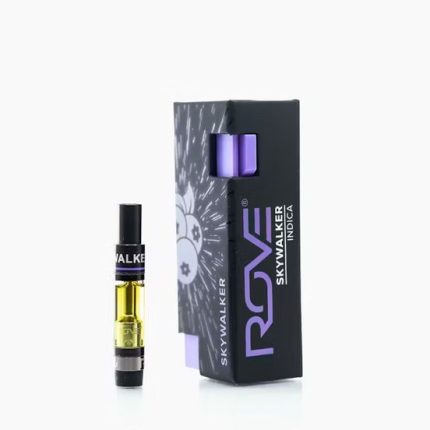



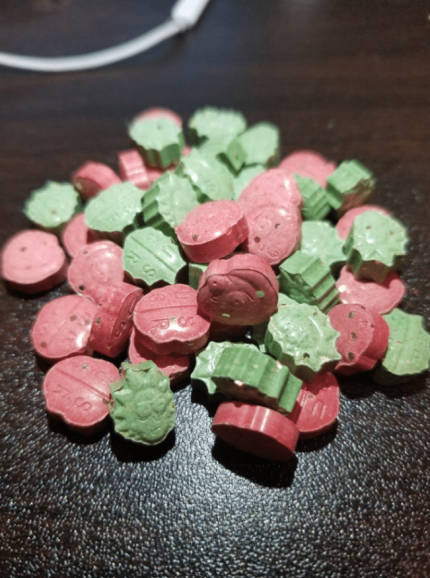
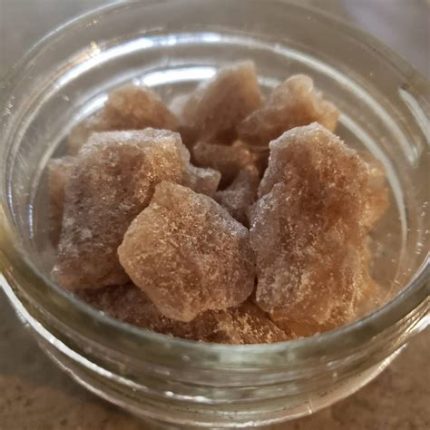
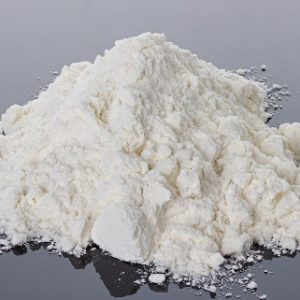
Reviews
There are no reviews yet.